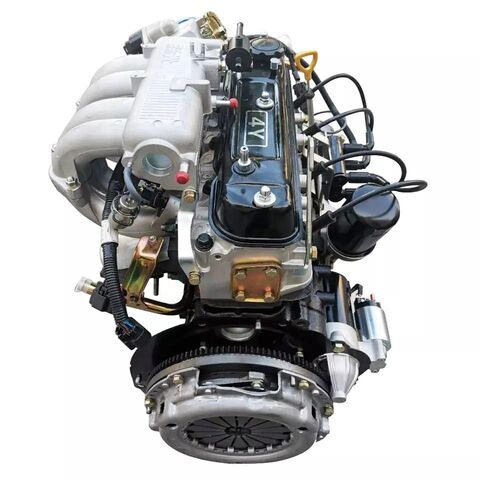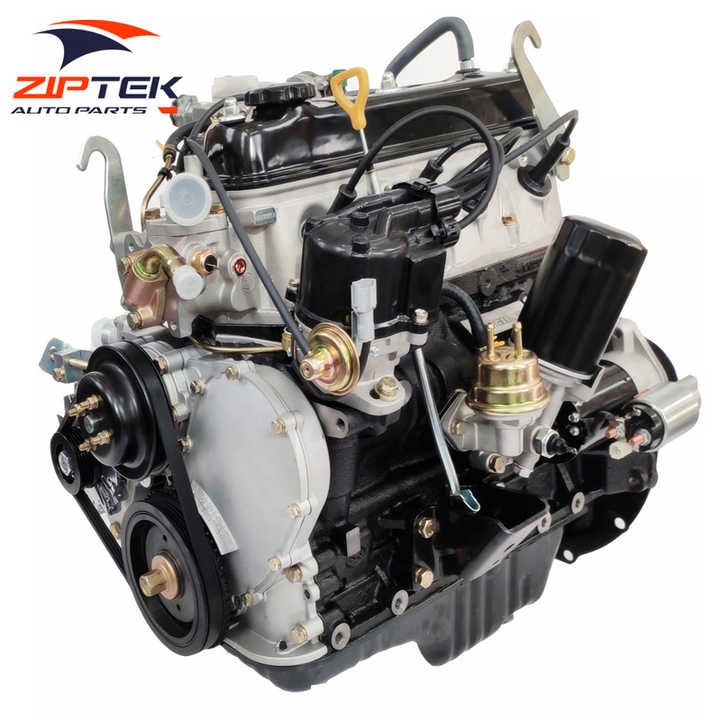How to Maximize Fuel Economy with Your 4Y Engine
How to Maximize Fuel Economy with Your 4Y Engine
Blog Article
The Ultimate Overview to the Engine: Secret Insights for every single Automobile Fanatic
Understanding the engine is basic for any automobile lover, as it offers as the heart of the automobile and determines its performance. This overview provides a thorough examination of engine makeup, types, and the technicians behind their operation, consisting of the cutting-edge innovations that are improving the automotive landscape. It underscores the crucial nature of maintenance practices that can significantly affect an engine's life-span. However, the intricacies of engine characteristics and the current innovations in innovation present questions that warrant more exploration. What might these insights expose about the future of vehicle engineering?
Anatomy of an Engine
Recognizing the composition of an engine is essential for any automobile enthusiast looking to dig deeper into automobile auto mechanics. An inner burning engine mainly contains numerous key parts that operate in unison to convert gas into power.
At the heart of this system lies the cylinder block, which houses the cylinders where combustion happens. Piston movement within these cyndrical tubes is facilitated by the crankshaft, which translates direct movement into rotational energy. Furthermore, the camshaft plays a crucial function in controlling the opening and closing of the engine's valves, making sure correct air-fuel combination consumption and exhaust gas expulsion.
Various other crucial parts include the fuel system, which supplies the engine with the necessary fuel, and the ignition system, in charge of starting combustion - 4y engine. The air conditioning and lubrication systems are additionally essential, keeping optimal operating temperatures and lowering friction, specifically
Engine Types and Configurations
A varied series of engine kinds and arrangements exists, each offering one-of-a-kind benefits and disadvantages tailored to different driving needs and choices. The most usual engine kinds include inline, V, flat, and rotary setups.
Inline engines, including cyndrical tubes arranged in a solitary line, are known for their simplicity and performance. They are frequently found in portable cars, providing a balance of power and economic situation. V engines, identified by their 2 banks of cylinders prepared in a V form, provide greater efficiency and smoother procedure, making them prominent in sporting activities and deluxe automobiles.
Flat engines, or fighter engines, have flat opposed cyndrical tubes, which add to a reduced center of mass, boosting vehicle stability. These are typically seen in brands like Subaru and Porsche.
Rotary engines, although less typical, use a special design with a triangular rotor and offer high power-to-weight ratios. They master portable and light-weight applications, largely seen in Mazda lorries.
Each engine type serves particular performance qualities, weight distributions, and gas efficiencies, ensuring that auto enthusiasts can select the appropriate engine setup to match their driving style and lorry demands.

Exactly How Engines Work
Engines, despite their kind or arrangement, run on essential principles that govern their performance and efficiency. At their core, engines convert gas into mechanical energy through a collection of regulated explosions or compressions. This process normally includes 4 main strokes: intake, exhaust, compression, and power.
During the intake stroke, the engine draws in a combination of air and gas. The compression stroke complies with, where the combination is pressed in the cylinder, boosting its temperature level and stress. In the power stroke, a spark ignites the pressed mixture (in gas engines) or the combination ignites spontaneously (in diesel motor), causing a rapid expansion of gases that presses the piston down. Finally, the exhaust stroke eliminates the spent gases from the cylinder.
The efficiency of an engine is affected by numerous factors, including the style of the burning chamber, the sort of fuel utilized, and the precision of the Get More Info engine's components. Comprehending these basic concepts is crucial for automobile enthusiasts who look for to value the detailed mechanics behind their automobiles, as well as for those aiming to improve efficiency via modifications and tuning.
Technologies in Engine Technology
In recent years, improvements in engine modern technology have considerably transformed the vehicle landscape, boosting both efficiency and ecological sustainability. Among one of the most notable innovations is the development of turbocharging and supercharging, which allows smaller engines to produce greater power outcomes without compromising fuel effectiveness. This has caused a surge in the appeal of scaled down engines, giving suppliers with the capacity to fulfill rigorous exhausts laws while keeping efficiency requirements.
Furthermore, hybrid and electric powertrains are reshaping the engine paradigm. Crossbreed find out systems integrate interior combustion engines with electric motors, maximizing fuel consumption and decreasing discharges. Fully electric vehicles (EVs) remove the burning engine entirely, relying upon advanced battery modern technology to supply immediate torque and excellent acceleration.
Furthermore, the integration of expert system and device knowing in engine management systems enables real-time optimization of performance parameters, boosting effectiveness and responsiveness. Developments such as variable shutoff timing and straight fuel shot even more refine burning processes, taking full advantage of power result while decreasing waste.
As the vehicle industry proceeds to develop, these technologies in engine innovation will play a crucial duty fit the future of flexibility, prioritizing both efficiency and sustainability.
Maintenance Tips for Lovers
Keeping an engine is as crucial as the innovations that enhance its performance. Normal upkeep not only prolongs the life of your engine but also makes sure optimum performance.
Examine and replace air filters regularly to make certain correct air flow, which is crucial for combustion effectiveness. A clogged up air filter can bring about lowered performance and increased gas intake. Monitor the coolant degrees to avoid getting too hot, and change coolant according to the service schedule. 4y engine.

Verdict
In conclusion, a complete understanding of engine composition, types, and technicians is crucial for automobile enthusiasts. Regular upkeep techniques, including oil adjustments and air filter checks, are crucial for making certain optimum engine capability and long life.

Engines, no matter of their type or setup, operate on fundamental concepts that control their efficiency and effectiveness. In the power stroke, a trigger ignites the pressed mix (in fuel engines) or the mixture sparks spontaneously (in diesel engines), resulting in a quick development of gases that pushes the piston down.In recent years, developments in engine innovation have actually significantly transformed the automotive landscape, improving both efficiency and see this site ecological sustainability.
Report this page